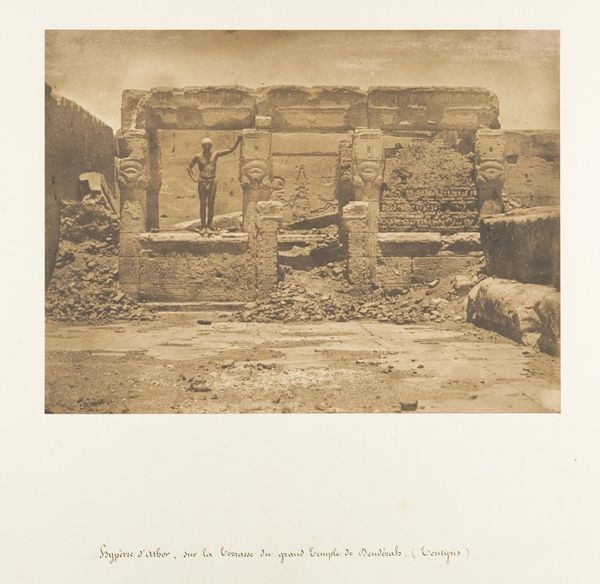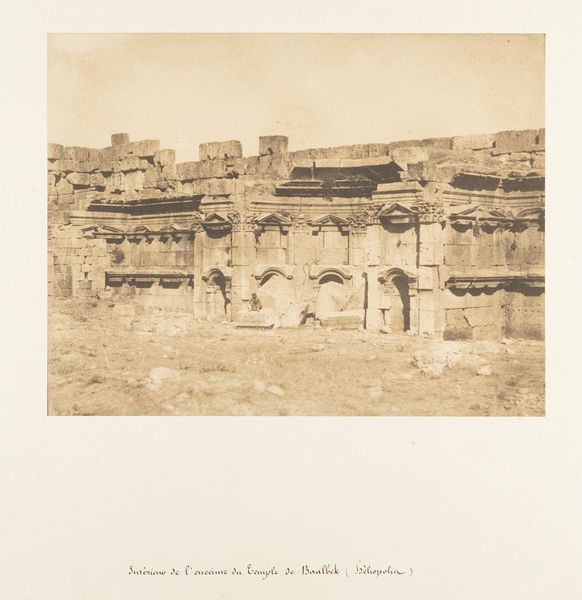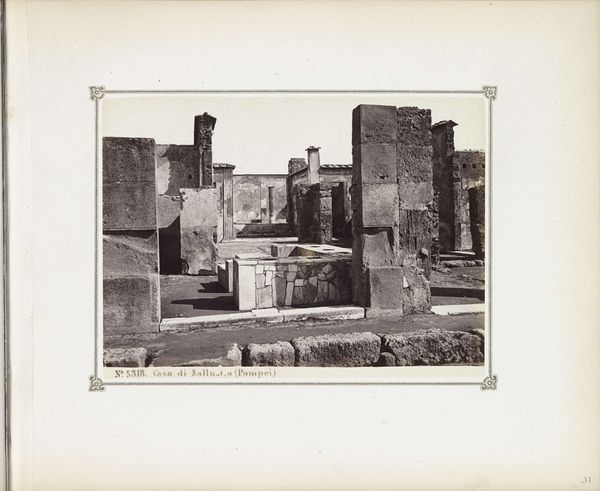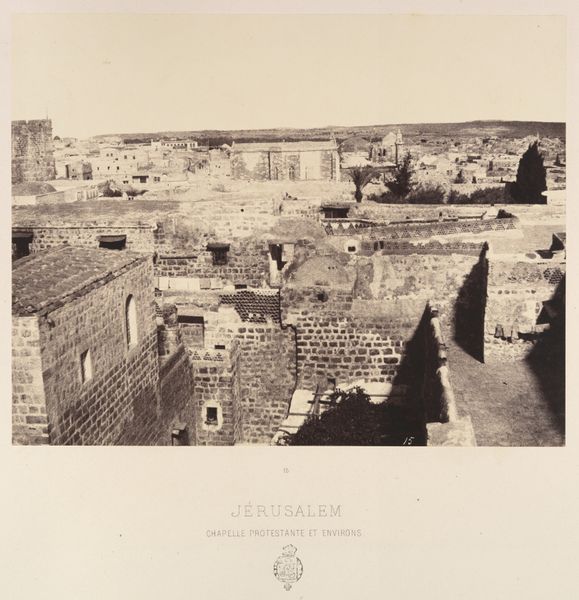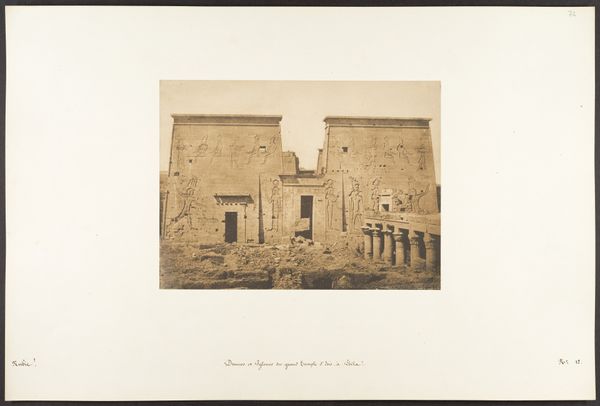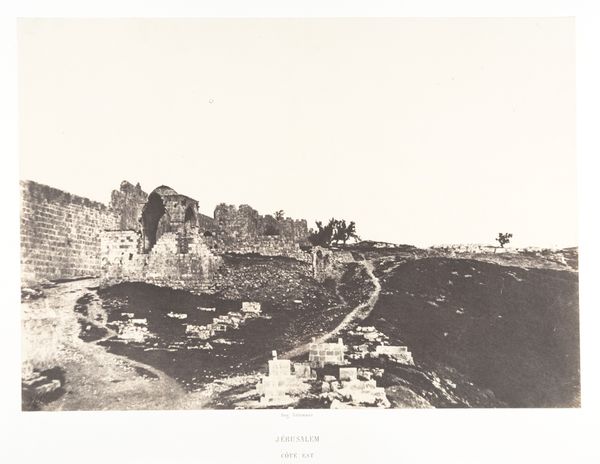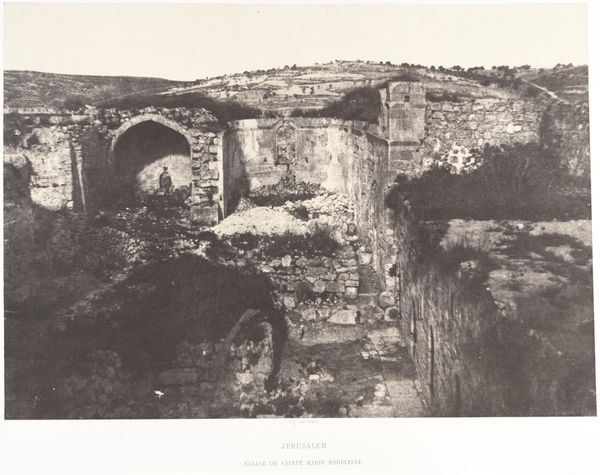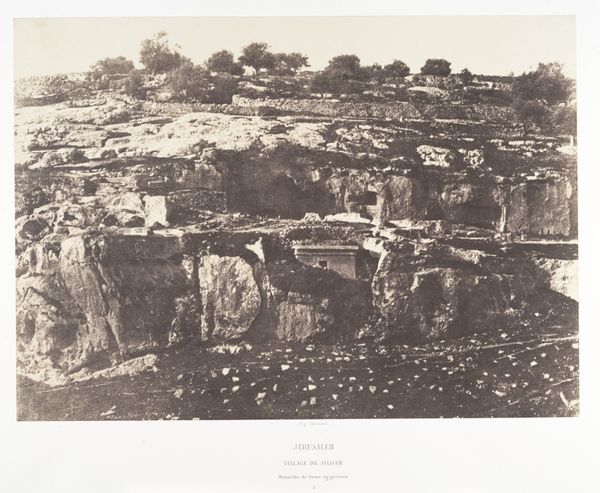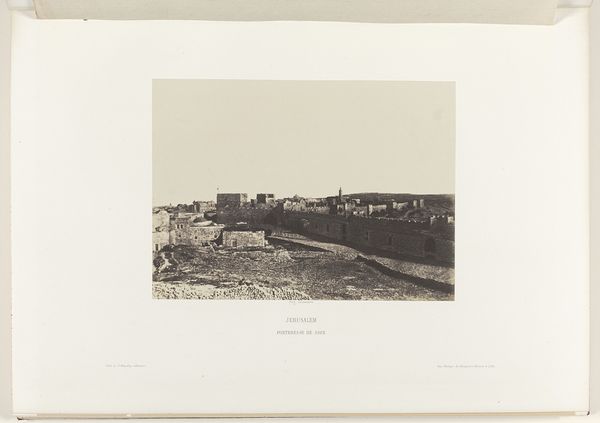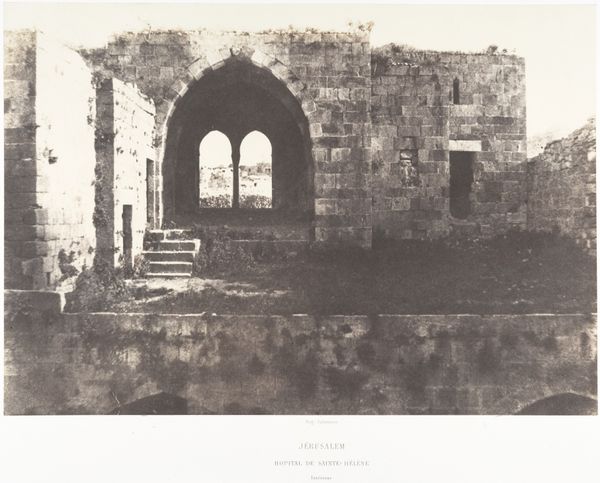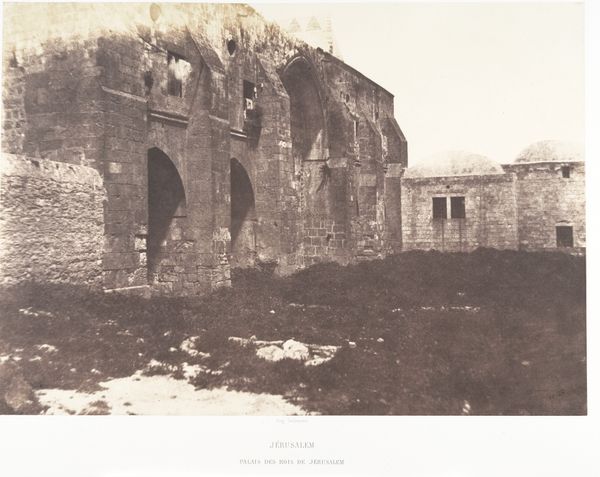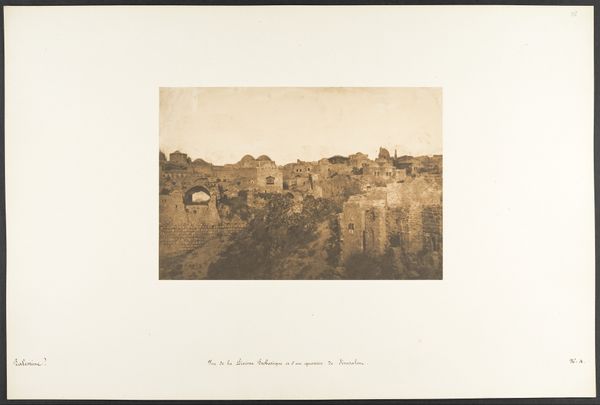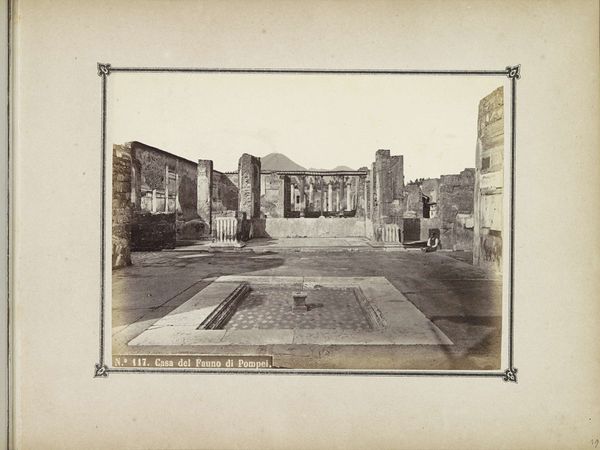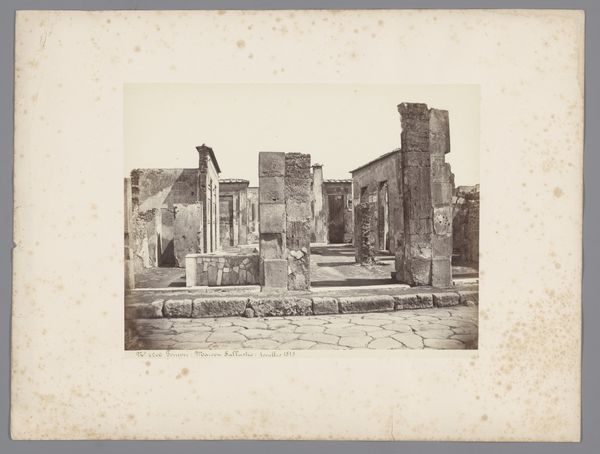
Façade postérieure de grande Temple de Dendérah (Tentyris) 1849 - 1850
0:00
0:00
print, photography, architecture
#
natural tone
# print
#
landscape
#
ancient-egyptian-art
#
photography
#
arch
#
pencil work
#
architecture
Dimensions: Image: 6 7/16 × 8 3/8 in. (16.4 × 21.2 cm) Mount: 12 5/16 × 18 11/16 in. (31.2 × 47.5 cm)
Copyright: Public Domain
Maxime Du Camp captured the rear facade of the Great Temple of Dendera in this 1850 photograph. The hieroglyphs and relief carvings are replete with symbols. Figures wearing the Ureaus, the sacred cobra, indicate royalty and divinity, emphasizing the pharaoh's dual role. The lotus flower, a symbol of rebirth and creation, often appears in offerings. Consider the winged solar disc, frequently depicted above doorways. This powerful symbol of protection and divine presence also appears in ancient Mesopotamian art. We can see the echo of its form and meaning in the classical world, adapted into the winged figures of Nike or Victory. Such transformations reveal how symbols migrate across cultures and time, continually reinventing themselves in the human psyche. The power of these images lies in their emotional resonance, engaging viewers on a subconscious level, tapping into our collective memory. These visual motifs— protection, rebirth, and divinity — are not bound by time. Like constellations, they reappear across cultures, evolving, and reminding us of humanity’s enduring quest to understand our place in the cosmos.
Comments
No comments
Be the first to comment and join the conversation on the ultimate creative platform.
